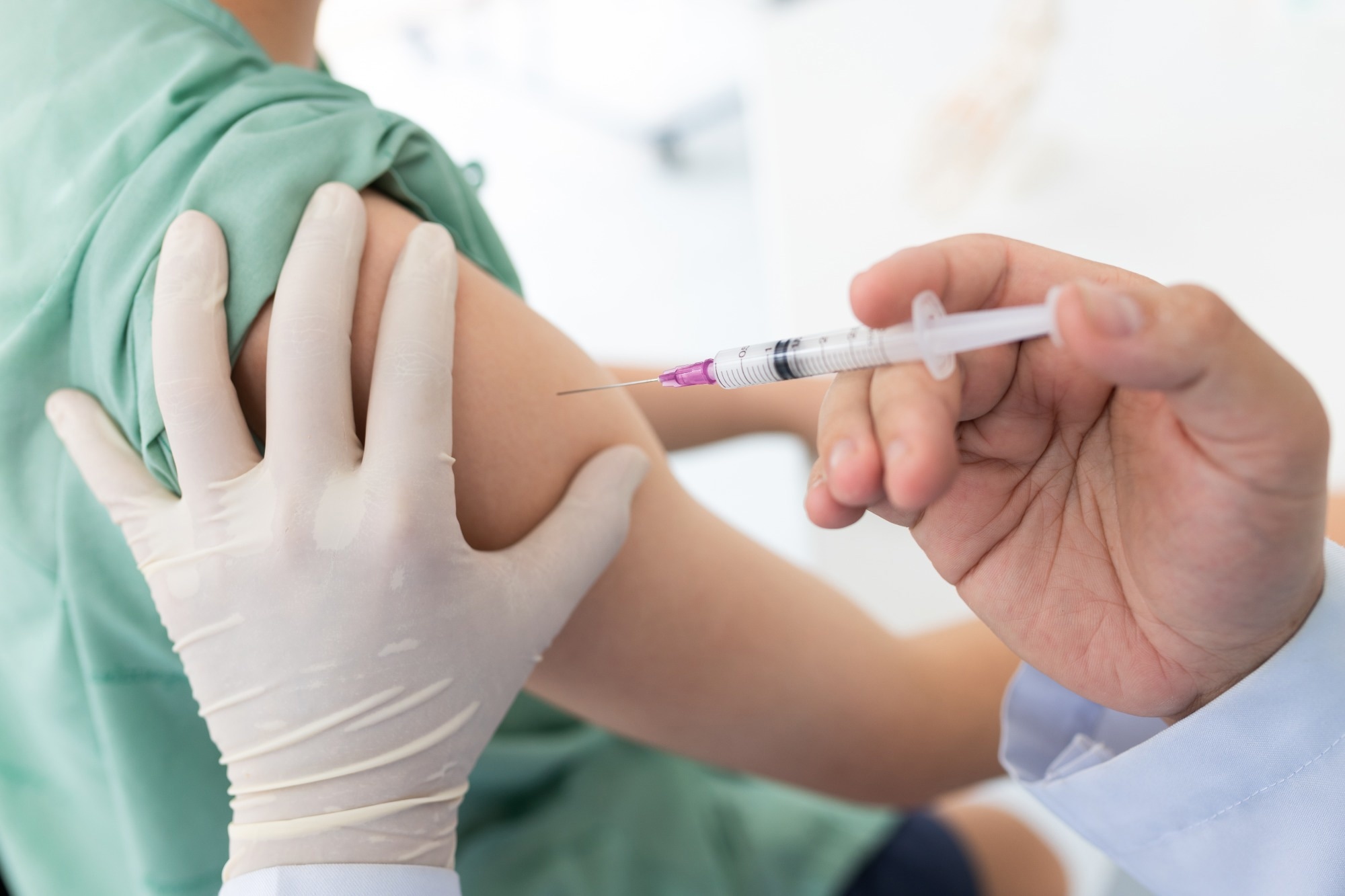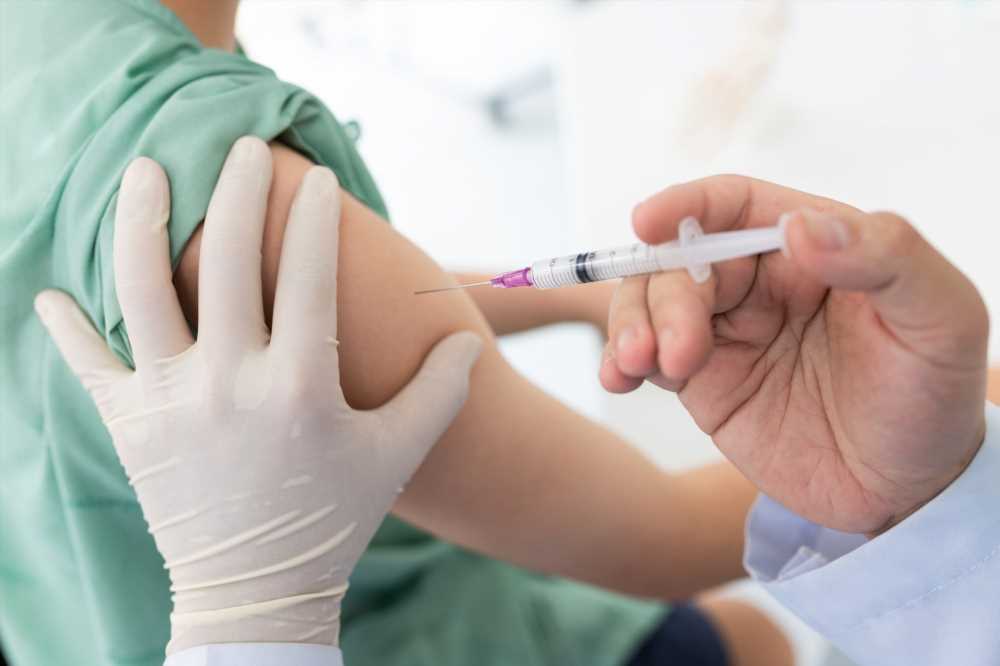In a recent study posted to the medRxiv* preprint server, researchers evaluated vaccine responses among North Californian residents, including differences in vaccine side effects and antibody (Ab) titers by age, sex, and vaccine type. They also evaluated the responses among individuals with comorbidities that enhance severe coronavirus disease 2019 (COVID-19) risks.

The unprecedented rise in COVID-19-associated morbidity and mortality globally has led to the development of severe acute respiratory syndrome coronavirus 2 (SARS-CoV-2) vaccines. It is essential to improve understanding of factors that could impact Ab responses. Studies have documented greater Ab titers by the Moderna vaccine than the Pfizer vaccine and lower titers among immunocompromised individuals.
About the study
In the present longitudinal observational study, researchers assessed the COVID-19 vaccination side effects and vaccine-induced Ab titers by age, sex, and vaccination type. They also investigated Ab titers among individuals with comorbidities that have been reported to increase severe COVID-19 risks.
The study was conducted between July 2020 and March 2021 and comprised 5,500 adult individuals from the Eastern Bay area of Northern California. Data were obtained via comprehensive questionnaires, and biological samples were obtained for anti-SARS-CoV-2 Ab testing. The study exposures comprised Johnson & Johnson (J & J, one dose), Pfizer-BioNTech (two doses), and Moderna (two doses) COVID-19 vaccines.
The prime outcomes were Ab responses (S/C ratios) against the SARS-CoV-2 spike (S) protein and self-reported 11 potential side effects (such as pain, rashes and/or erythema at the injection site, rashes at other areas, fever, chills, headaches, body ache, diarrhea, abdominal pain, and nausea). Severe vaccination side effects such as anaphylaxis and hives were also investigated.
All individuals who filled out questionnaires at timepoint 1 (T1, between February and March 2021) and T2 (between May and June 2021) were included in the analysis to obtain data on COVID-19 vaccination status, date(s), side effects, and pre-existing comorbidities. In addition, at T1, Ab S/C ratios obtained from the participants’ sera were measured. Multivariate and Poisson regression models were used for the analysis.
Results
At T1, 2,049 individuals had received ≥1 vaccination. They had reported their S/C ratio, of which only one participant had received J & J vaccination, and therefore, 2,048 individuals who received Moderna or Pfizer-BioNTech vaccines were analyzed. Among 12 cities in the East Bay region, high vaccination rates with consistent vaccination coverage across postal codes were observed, with the median rate of COVID-19 vaccination being 99%.
At T2, only 1.6% (n=72) participants were non-vaccinated. Two-dose Moderna vaccinees and single-dose J % J vaccinees had greater odds of reporting many side effects than the two-dose Pfizer-BioNTech vaccinees. The S/C ratios were higher with each additionally reported side-effect post-double vaccinations.
The S/C ratios were lower post-vaccination among participants aged ≥65 years and in men. At T1 and T2, Moderna vaccinees showed greater S/C ratios, 72% higher among two-dose Moderna vaccinees than the two-dose Pfizer-BioNTech vaccinees. The S/C rations were >20% lower among individuals with diabetes, cardiovascular disorders, and asthma.
Fully vaccinated Moderna vaccinees had greater odds of reporting fatigue, body ache, abdominal pain, fever, chills, nausea, headache, pain, and erythema at the site of injection and a higher count of side effects. Among single-dose J & J vaccinees and two-dose Pfizer-BioNTech vaccinees, J & J vaccinees had greater odds of reporting fever, chills, body ache, headache, and the total number of side effects but lesser odds of erythema and pain at the site of injection.
Side effects post-single vaccinations did not show significant associations with Ab responses, and after double vaccinations, for every additionally documented side effect, the participants’ S/C ratios were elevated by 10%. For individuals who received only one vaccine dose with >14 days between sera sample collection and vaccination, a 44% reduction in the S/C ratios was observed for individuals aged ≥65 years, with 31% lower rations among men compared to women.
For a one-day increase between COVID-19 vaccination and sera sample collection, S/C ratios increased by seven percent. For individuals <14 days past two-dose vaccinations, the S/C ratios were 43% greater among women than men.
Overall, the study findings showed that Ab responses among Moderna vaccinees were greater than Pfizer-BioNTech vaccinees. Ab responses were associated with side effects of COVID-19 vaccinations and were lower among individuals with diabetes, cardiovascular disorders, and asthma.
*Important notice
medRxiv publishes preliminary scientific reports that are not peer-reviewed and, therefore, should not be regarded as conclusive, guide clinical practice/health-related behavior, or treated as established information.
- Olivia Solomon, et al. (2022). COVID-19 vaccine antibody response is associated with side effects, chronic health conditions, and vaccine type in a large Northern California cohort. medRxiv. doi: https://doi.org/10.1101/2022.09.30.22280166 https://www.medrxiv.org/content/10.1101/2022.09.30.22280166v1
Posted in: Medical Science News | Medical Research News | Disease/Infection News
Tags: Abdominal Pain, Anaphylaxis, Antibody, Asthma, Coronavirus, Coronavirus Disease COVID-19, covid-19, Diabetes, Diarrhea, Erythema, Fatigue, Fever, Headache, Hives, Mortality, Nausea, Pain, Protein, Respiratory, SARS, SARS-CoV-2, Severe Acute Respiratory, Severe Acute Respiratory Syndrome, Syndrome, Vaccine

Written by
Pooja Toshniwal Paharia
Dr. based clinical-radiological diagnosis and management of oral lesions and conditions and associated maxillofacial disorders.
Source: Read Full Article
